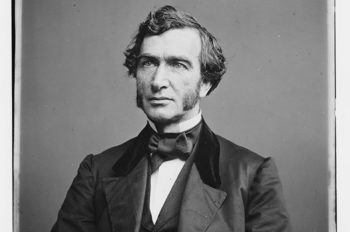Five Questions: The Morrill Act
The Morrill Act, also known as the Land-Grant College Act of 1862, was a groundbreaking piece of legislation that paved the way for the founding of universities across the nation, including Texas A&M University.
1. Who was Morrill?

Justin Smith Morrill was a Vermont congressman who served in the House of Representatives from 1855-1867, and then as a U.S. senator from 1867-1898. He is best known for the legislation that bears his name: The Morrill Act or The Land-Grant College Act of 1862, which turns 159 years old this month.
2. What is a land-grant university?
A land-grant college or university is one that was founded as a result of the Morrill Act, which granted funds from the sale of federal lands to states in order to establish higher education institutions. The schools were to focus primarily on teaching agriculture, mechanics and military tactics – subjects that had not traditionally been taught at many universities at the time.
3. How did the Morrill Act become law?
When Morrill first introduced the legislation in the late 1850s, it was called “An Act Donating Public Lands to the Several States and Territories which may provide Colleges for the Benefit of Agriculture and the Mechanic Arts.” President James Buchanan vetoed the bill in 1859 because he was siding with southern Democrats who thought education should be the job of the state, not the federal government. But the legislation was revived two years later at the start of the Civil War. Those who opposed the bill were no longer in power because the South had seceded from the union, making way for President Abraham Lincoln to sign the bill into law in 1862.
4. What universities in Texas are land-grant universities?
The only land-grant institutions in Texas are Texas A&M and Prairie View A&M. When Texas rejoined the union after the Civil War, the state agreed to create a college under the terms of the Morrill Act and in 1871, the Texas Legislature founded the Agricultural and Mechanical College of Texas, the state’s first institution of higher education. The university opened its doors to students in 1876 and eventually the name was changed to “Texas A&M University.” Although the “A” and “M” once stood for “agriculture and mechanical,” today they are purely symbolic, a tribute to the Morrill Act and its original intention to teach practical skills. Two years later, in 1878, the state’s second land-grant college, today known as Prairie View A&M, was founded.
5. Why is the Morrill Act still important today?
The Morrill Act made possible the higher education of millions of Americans who might not otherwise have received the opportunity to attend college, supporting economic growth for a burgeoning nation. Today, including Texas A&M and Prairie View A&M, there are 112 land-grant institutions across the U.S., of which 19 are historically black and 33 are tribal. Texas A&M’s establishment as a land-grant institution helped it to achieve its other federal designations – sea grant in 1971 and space grant in 1989, making it among the first four universities to hold all three designations.




